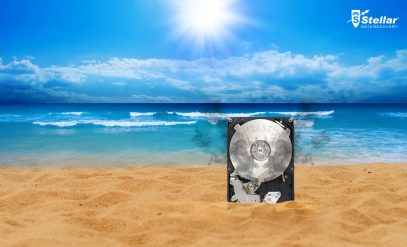Exploring Benefits and Downsides of Different Data Storage Options and How to go about Choosing One
With storage industry taking a big leap every year, it is apparent that we have more options at our disposal. Selecting a PC storage device is much more than just comparing capacity and cost. Storage needs vary for different groups of users and making the right choice ain’t that easy in this storage landscape. In order for sorting this out, here is a brief on the benefits and limitations of different PC storage options available today.
Hard Disk Drives
Hard disk drives have been long known as a standard for laptop or desktop storage. Modern hard disk drives are way better than their counterparts in many respects. However, the underlying technology hasn’t seen too many changes as of now. You will find these drives have rotating magnetic platters onto which read/write heads move to and fro to access or record data.
Hard disk drives could be your saving grace when it comes to reliability and cost-effectiveness. They are as cheap as a few cents per gigabytes and reliable than most of the storage media devices available today. Furthermore, they provide you massive storage up to 4 TB.
These drives may not be the best bet if you are seeking performance in your data storage media. Albeit they support fairly fast read/write speeds up to 200 MB per second and access times of sub-8ms, they do not compare with solid-state drives or hybrid hard drives with blazing read/write speeds.
Solid-state Drives
Solid-state drives effectively correlate with hard drives on many grounds. They are similar in the way they store files or connect to your system. However, these drives have shrugged off those magnetic platters and replaced them with NAND flash memory. This move has resulted in a dramatic improvement in performance as well as data access times.
SSDs prove to be worthwhile where excessively low boot times and application launch times are a necessity. You can significantly reduce the chances of a mechanical breakdown by choosing SSDs as there are no moving parts. Thus, performance and durability of these drives make all the difference.
When cost is the deciding factor, these SSDs do not make for an apt choice. If you compare cost per gigabyte, they will sound much more expensive than any of the counterparts in the market. Another concern is that they are nowhere near as hard disk drives in terms of storage capacity. Among the SSDs that have hit the market, the highest storage is offered by its 1 TB model.
Hybrid Hard Drives
Hybrid hard drives have the likes of both hard disk drives and solid-state drives. You will find both rotating platters and NAND flash memory on a single storage unit. The frequently accessed bytes of data are stored on the NAND flash memory area while the rest of the drive information is placed on the platters. This helps to achieve lightning-fast speeds when reading or making changes to the most-used files.
Hybrid hard drives combine the benefits of both HDDs and SSDs, such as cost, performance, capacity, and manageability. Hybrid drives won’t cost you a pretty penny when you compare their benefits with those of other storage options. However, hybrid drives will function like standard hard drives when you deal with new files or infrequently used bits. In a nutshell, these drives are superior to all other forms of storage when you do not regularly create new data.






